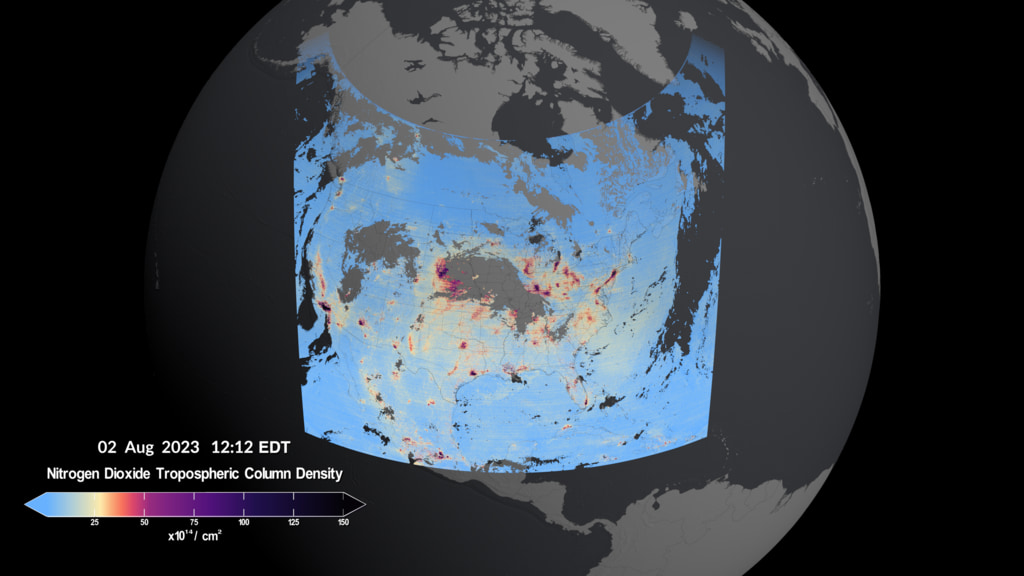TEMPO Air Quality Monitoring: Three Example Cases
Since launching in 2023, NASA’s Tropospheric Emissions: Monitoring of Pollution mission, or TEMPO, has been measuring the quality of the air we breathe from 22,000 miles above the ground. June 19 marked the successful completion of TEMPO’s 20-month-long initial prime mission, and based on the quality of measurements to date, the mission has been extended through at least September 2026. The TEMPO mission is NASA’s first to use a spectrometer to gather hourly air quality data continuously over North America during daytime hours. It can see details down to just a few square miles, a significant advancement over previous satellites.
When air quality is altered by smog, wildfire smoke, dust, or emissions from vehicle traffic and power plants, TEMPO detects the trace gases that come with those effects. These include nitrogen dioxide, ozone, and formaldehyde in the troposphere, the lowest layer of Earth’s atmosphere.
Central Plains Dust and Wildfire Event, April 14 2025
On April 14 2025, strong winds triggered the formation of a huge dust storm in the U.S. central plains and fueled the ignition of grassland fires in Oklahoma. On the left, the nitrogen dioxide (NO2) plumes originating from the grassland fires are tracked hour-by-hour by TEMPO. Smoke can be discerned from dust as a source since dust is not a source of NO2. The animation on the right shows the ultraviolet (UV) aerosol index, which indicates particulates in the atmosphere that absorb UV light, such as dust and smoke.
Red River Valley Soil Emissions, May 5 2025
On May 5 2025, TEMPO measured NO2 emissions over the Twin Cities in the center of Minnesota during morning rush hour. The amount NO2 increases in the air mid-day through early evening hours is illustrated by intense the red and black shaded areas at the Red River Valley along the North Dakota state line driven by emissions from the soils in agriculturally rich areas. Agricultural soil emissions are influenced by environmental factors like temperature and moisture as well as fertilizer application. Small fires and enhancements from mining activities can also be seen popping up across the region through the afternoon.
Houston Air Quality, Aug. 2 2024
By measuring NO2 and formaldehyde (HCHO), TEMPO can derive the presence of near-surface ozone. On Aug. 2 2024, over Houston, TEMPO observed exceptionally high ozone levels in the area. On the left, NO2 builds up in the atmosphere over the city and over the Houston Ship Channel. On the right, formaldehyde levels are seen reaching a peak in the early afternoon. Formaldehyde is largely formed through the oxidation of hydrocarbons, an ingredient of ozone production, such as those that can be emitted by petrochemical facilities found in the Houston Ship Channel.
Credits
-
Visualizer
- Trent L. Schindler (USRA)
-
Scientist
- Laura Judd (NASA/LaRC)
-
Writers
- Charles Hatfield
- Mike Carlowicz (NASA/HQ)
Datasets used
-
TEMPO Level 3 Gridded [TEMPO: TEMPO]
ID: 1249
Note: While we identify the data sets used on this page, we do not store any further details, nor the data sets themselves on our site.
Release date
This page was originally published on Thursday, July 3, 2025.
This page was last updated on Thursday, July 3, 2025 at 10:22 AM EDT.
